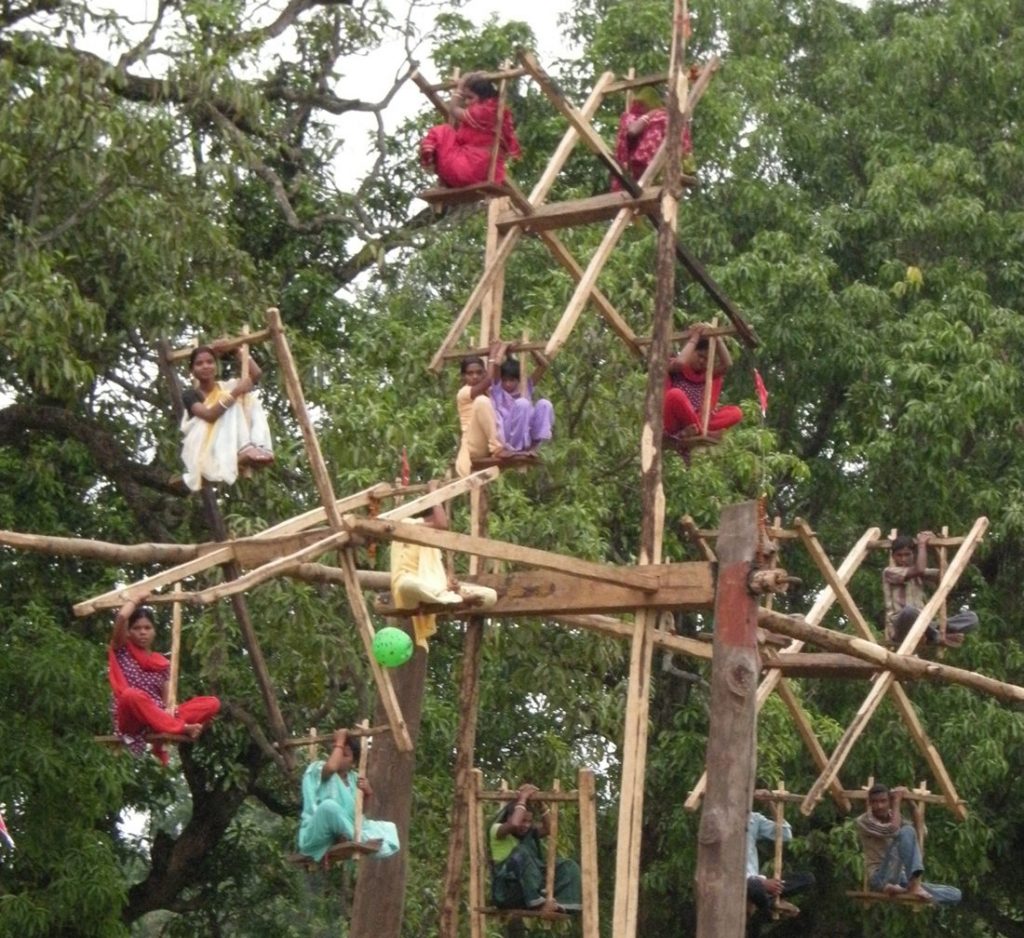Keonjhar: As Raja approaches, the atmosphere in this district echoes with fervor. Folk song ‘Banaste dakila gaja, Barasaku thare asichhi Raja, Asichhi rajalo gheni nua sajabaja’ can be heard in every maiden’s mouth. Girls are often seen in new garments singing the folk song in chorus while swinging in swings, and the air filled with aroma of ‘poda pitha’ (traditional baked cake) synonymous with this festival.
This is the kind of scene one would get to see everywhere starting from rural pockets to the colonies in the town here. That said, the celebrations have evolved over time while the essence of the festivities have remained the same.
“Earlier the festival used to be celebrated for seven days maximum. From children to elders, rich to poor everyone celebrated the festival, pushing the boat out,” says professor Anil Kumar Das adding, “A tradition is still followed that family gets reunited on this occasion. This festival brings an opportunity for family members to come together irrespective of their professions and work locations.”
Elderly litterateur Ram Krushna Mohapatra says, “Raja is the festival for women only. During the three days of the festival, women and girls do nothing at homes. They often collect water for three days on the day before Pahili Raja so that nobody asks them to bring water during the festival. Wearing new clothes, colouring lips red with betels and putting ‘alata’ on feet, they engage themselves in all kind of merrymaking, starting from swinging, taking part in various competitions, singing and dancing.”
Retired lecturer Bimbadhar Behera is of the opinion that the festival is no longer observed the way it used to be in their times. “In our times there used to be swings at village end mango orchards and at every houses. Wood is no longer available for putting up swings due to rampant deforestation for industrialisation and for other developmental projects.
However, the tradition is kept alive at places like Putulia, Binajhari, Bistapal, Jalabang, Sitabinj, Jamujodi, Gobardhan, Janghira, Champua, Ukhunda, Jali, Nayagarh etc, he observed.
At Jalabang under Sadar block, hundreds of people throng to witness Rajabati marriage – a century old tradition. Idols of Rajabati and her groom are made of clay and then their marriage is solemnised following according to Hindu marriage rituals. A community feast is organized as well on this occasion.
On this day, Sitabinj – a place believed to have mythological importance, witnesses a large gathering. There are no swings here. But people come in numbers to have a glimpse of goddess Sita, and the twins-Laba and Kusha as they believe they would get blessings of the goddess if they have a darshan of them inside a rock hole on this day.
PNN
